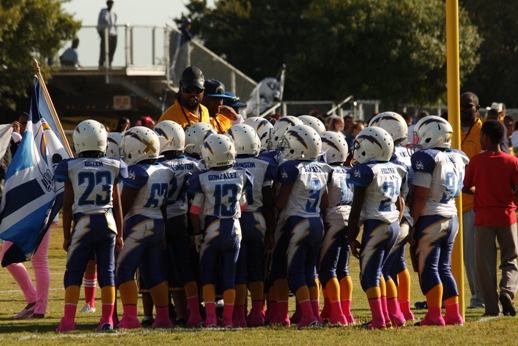The American Academy of Pediatrics today endorsed efforts to limit contact practices in youth football, but declined to make a clear recommendation in favor of delaying the age at which tackling is introduced, and likewise refused to support those calling for an outright ban on tackling in football for athletes below age 18, unwilling to recommend at this time such a fundamental change in the way the game is played.
Writing for the AAP's Council on Sports Medicine and Fitness, William P. Meehan, III, Director of The Micheli Center for Sports Injury Prevention at Boston Children's Hospital, MomsTEAM concussion expert emeritus, and featured in MomsTEAM's PBS documentary, The Smartest Team: Making High School Football Safer, and Gregory Landry, a professor specializing in pediatric and adolescent primary care sports medicine at the University of Wisconsin School of Medicine and Public Health, recognized that head and neck injuries in football have been a topic of "intense interest recently in both the public media and the medical literature."

They acknowledged that safety concerns - especially about the risk of concussions and catastrophic injuries - have led to a drop in football participation, while recognizing that the potential for adverse long-term health consequences from multiple concussions and repeated subconcussive blows to the head had prompted calls for limits on the number of full-contact practices, a delay in the age in which tackling is introduced, and even for an outright ban on football at below college.
Noting that the effect of subconcussive blows on long-term cognitive function, the incidence of chronic traumatic encephalopathy (CTE), and other health outcomes remains "unclear," and that further research was needed, the group nevertheless endorsed efforts to reduce the number of impacts to the head in football because, "Repetitive trauma to the head is of no clear benefit to the game of football or the health of football players."
The AAP saw in a delay in the age at which tackling is introduced both benefits (a likely decrease in risk of injury) and potential risks (once tackling was introduced, athletes lacking tackling experience might be exposed to an increased risk of injury). The group therefore said no "informed recommendation" could be made until further investigation into the effects of delaying the introduction of tackling until a certain age could be made.
If organizations decided to delay the introduction of tackling, the statement said such change would need to be accompanied by a concentrated effort by coaches to teach proper tackling technique as well as the teaching of skills necessary to evade tackles and absorb hits. "It is unclear," said the statement, "whether such techniques and the neuromuscular control necessary for performing them can be adequately learned in the absence of contact." (For a 2011 blog post by MomsTEAM's Brooke de Lench discussing the two sides of this debate, click here)
Outright tackle ban: a bridge too far
Finally, the group was completely unwilling to go so far as to endorse removing tackling from football at the youth and high school level altogether.
Despite recognizing that doing so would likely lead to fewer injuries of every kind (e.g. overall injuries, severe injuries, catastrophic injuries, and concussions), the AAP decided not to endorse a complete ban on tackle football, largely because removing tackling from the game would lead to a "fundamental change in the way the game is played."
The group thus left it to "participants" to "decide whether the potential health risks of sustaining these injuries are outweighed by the recreational benefits associated with proper tackling."
Injuries associated with tackling
Reviewing the medical literature, the AAP found that most injuries in tackle football were "minor" (e.g. contusions, strains to muscles and tendons, and ligament sprains), with with head and neck injuries accounting for a "relatively small proportion" of overall injuries.
Available data suggested that both the overall incidence and severity of injuries increased with age, with injuries at the youth level lower than for older players. Some studies suggested that the incidence of overall injuries in football were similar to other sports, said Meehan and Landry, but the incidence of serious injuries "appears to be greater" for football than any other team sport.
Tackling accounted for a higher proportion of injuries resulting from contact, and tackling in particular, the most common player activity at the time of injury and at the time of severe injury.
Although they characterized the risk of catastrophic injuries to the head and neck in football as "low", Meehan and Landry admitted hat it was likely higher in football than in other sports and appeared to increase with age. The risk of catastrophic injury, such as quadriplegia, was found to be comparable to that in gymnastics and lower than in ice hockey; lower for youth players than high school players, and lower for high school players than those playing college football.
Severe and catastrophic injuries, particularly to the head and neck, including paralysis and brain bleeds, were associated with spear tackling, or leading with the crown of the helmeted head while tackling by defensive players. Such practices, while banned almost forty years ago "continue to be the predominant mechanism of injury causing quadriplegia," the group said, leading it to call for improved teaching of proper tackling technique and better enforcement of existing rules prohibiting the use of the helmet in tackling.
As for the risk in tackle football of second impact syndrome, the statement said that, while often associated with football, it has been observed in other sports such as ice hockey, boxing, and skiing. Given its rarity, its incidence in football was, said the group, unknown.








